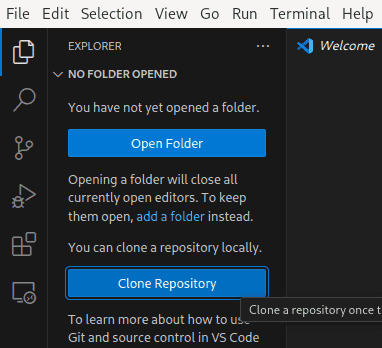Computational Methods I
USOS
 This is the mandatory Computational Methods I course of the Master in Theoretical Physics at the University of Wrocław. It is tailored towards master and PhD students who are familiar with
This is the mandatory Computational Methods I course of the Master in Theoretical Physics at the University of Wrocław. It is tailored towards master and PhD students who are familiar with
- computers and their operating systems (Linux is preferred, but Windows or MacOS will work, too)
- at least one programming language, ideally Python which we will use in the course
- classical and quantum mechanics.
There are many good books on the subject, four that I like are
- Landau , Páez, Bordeianu: Computational Physics: Problem Solving with Python
- Scherer: Computational Physics - Simulation of Classical and Quantum Systems
- Matthes: Python Crash Course - A Hands-On, Project-Based Introduction to Programming
- Johansson: Numerical Python
There will be 2 hours of lectures and 2 hours of labs each week. Please keep in mind that attendance is mandatory and will be checked. Exercises will be posted here at least a week before the lab they are discussed in. Please keep in mind that active participation in the labs and especially submitting the solution to the posed problems is important to pass the course. M.Sc. Hemant Prasad will be the assistant for this course. Please fell free to contact him () or me if you have any questions. For information about credits points, please refer to the syllabus or contact me directly.
Location: We are in the computer lab 120 for both, the lectures and the labs.
Hybrid participation: At least the first lectures will be streamed on YouTube with the link for each of them given below. This should help if you are officially not able to physically attend. For everyone else, attendace is mandatory and will be checked.
Exam: As discussed during the first lecture, we will have individual projects for the exam. If you have any project idea, we are very happy to hear about it and then decide together how to best implement it. Here are a couple of ideas which might help you
- Molecular Dynamics Simulations: Simulate the behavior of a gas or liquid using molecular dynamics. For example implement the Lennard-Jones potential and study properties like diffusion, temperature, or phase transitions.
- Quantum Mechanics Simulations: Solve the Schrödinger equation for a coherent state in the stadium billiard and compare its time evolution with the classical trajectory. Plot some of the eigenfunctions and discuss their properties.
- Monte Carlo Methods: Implement a Monte Carlo simulation of the 2-dimensional Ising model or percolation. Explore random sampling techniques, convergence properties and/or phase transitions.
- Astrophysical Simulations: which is either
- N-body simulations or
- solve the TOV equation
- Electromagnetic Wave Propagation: Model the propagation of electromagnetic waves in various media. Implement the Finite-Difference Time-Domain (FDTD) method to study wave behavior, reflection, and refraction.
- Chaos and Dynamical Systems: Explore chaotic systems, such as the logistic map or Lorenz attractor. Focus: Analyze stability, bifurcations, and strange attractors (other than the Lorenz attractor) using numerical methods.
- Quantum Computing Simulations: Simulate simple quantum algorithms (e.g. Grover's, and Shor's algorithm or quantum teleportation). Implement quantum gates and circuits using Python with libraries such as Qiskit.
Once you have chosen a project and it is approved by us, you will prepare your Python code, a small documentation and some of the most important results and submit them to us by February the 3rd 2026 here on the website in the project section below. It is only possible to submit a single file. If you have multiple files in your project, please combine them to a ZIP-archive. After this, you will have a 15-minute presentation of your results during the exam session (dates and times are also given below) followed by 5 minutes of discussion.
For the last five tutorials, there will be no assignments. Instead you have the chance to discuss problems in the yet open assignment which you have to submit until January the 31st 2026 and challenges you encounter in your project.
Development environment: In this course we will use the programming language Python with a notebook interface, called Jupyter notebooks. To get all this running, and avoid possible problems with incompatible versions of Python packages, we will use a standardized development environment. To set it up, please first install Visual Studio Code. On Linux, you will most likely have it already in your package manager. Alternatively, you can also download it here. Next, you need to clone the git repository for this course. To this end, open VS Code and click on the two documents (Explorer, Ctrl+Shift+E) to find something which looks like this
Now, click on "Clone Repository" and enter the URL of our git repository
https://www.fhassler.de/git/public/ComputationalMethodsI
like this
Finally you have to install all packages for the virtual environment, we use to run our Python code and notebooks. In the main menu, click on Terminal and then Run Build Task... (Ctrl+Shift+B). After this you should see some activity in the terminal on the bottom of the screen. If there are no errors, you have successfully installed the virtual environment. Now you are ready to add your own notebooks or run some of the already provided.
Additional material for the individual lectures, including the exercises which we discuss in the labs, is given below:
Lectures
- A quick introduction to PythonTutorial03.10.2025 10:15, exercise
Unfortunately, there has been a problem with storing the recording. Therefore, I link the recording from last year's lecture. The most updated organizational notes you can still find in the attached notes.
- Different representations of numbers and their numerical errorsTutorial10.10.2025 10:15, exercise
- Numerical differentiation and integrationTutorial17.10.2025 10:15, exercise
I have updated the virtual environment to include the libraries scipy and sympy. You can just pull the most recent version from the git and run the build task again (like described above) to be able to use these libraries.
- Ordinary differential equationsTutorial24.10.2025 10:15, exercise
- Classical dynamics with regular and chaotic behaviorTutorial31.10.2025 10:15, exercise
You might be interested to see a real, physical double pendulum after this lecture. Moreover you can play with the corresponding Poincare-map.
- Methods to solve non-linear equationsTutorial07.11.2025 10:15, exercise
- Generating random numbersLecture12.12.2025 09:15
- Langevin and Brownian dynamicsLecture19.12.2025 07:30
There are some nice examples of Langevin dynamics simulations on this website for the harmonic oscillator and for the double well potential, we already encounter in the computation of tunneling rates.
- Monte-Carlo simulationsLecture09.01.2026 07:30
- The two dimensional Ising modelLecture16.01.2026 07:30
- Partial differential equationsLecture23.01.2026 07:30
- Neural networksLecture30.01.2026 07:30, digit_recognition_cnn.py
The attached python implements the CNN for the digit recognition. It is a slight modification of the one given it this repository. You can add a test sample in the file test_image.png. Before runnig it, you have to install tensorflow and matplotlib. The repo for the course contains the respective virtual environment. Note that tensorflow will not work with the most recent (3.13) version of python. You have to use 3.12, which can be down with pyenv.
Projects
- Erosion Simulator, description
I'd like to create a real-time simulation of hydraulic erosion in procedurally generated terrain. I plan to use some common vector based algebra for rendering and shading terrain and numerical ODE methods like RK4 for calculating terrain height changes.
Here's the github repository of the project: https://github.com/Robert-Kurczak/erosion-simulation
- Path of Celestial Objects, description
It plots the altitude–azimuth path of stars and planets for any location and date. It uses Hipparcos data and Skyfield ephemerides to produce accurate visuals and numerical diagnostics such as rise/set times, angular speeds, and curvature.
- Simulation of sound propagation in 1D (hopefully more dimensions) simplified car cabin with active noise control, description
The project focuses on a numerical simulation of acoustic wave propagation in a one-dimensional model of a car cabin and on demonstrating active noise reduction at a selected control point using the adaptive Filtered-x LMS algorithm. We want to evaluate ANC performance and find out how numerical parameters affect simulation. At first I would like to try simulating setup with one loudspeeker and one control point - microphone.
We represent the car cabin in 1D. We introduce a noise source that represents engine or road noise. To keep the problem clear and controllable, we start with a simple noise and optionally add some random noise. We choose one location where we want the sound to be lower for example, near the driver’s seat. This location acts like an error microphone. The simulation provides a time signal of the sound pressure at this point. Then we add a second sound source that represents ANC loudspeaker. The goal of ANC is to generate anti-noise signal that is opposite in phase to the unwanted noise, so that both waves cancel each other at the error microphone position. Key part is adaptive algorithm called Filtered-x LMS. It continuously adjusts the loudspeaker signal based on the measured error signal. Over time, the algorithm should reduce the noise level at the control point.
- Exoplanet hunting using light curve analysis of TESS data, description
Utilisation of TESS data extracted from resources such as ExoFOP and MAST to learn and apply basic light curve analysis techniques for exoplanet transit detection. The focus will be on preprocessing data, detecting potential transit signals and estimating orbital period to possibly further characterise the potential exoplanet. The concept of the project is based on the transit method. This method relies on analyzing the brightness variations of a star called light curves, obtained from the Transiting Exoplanet Survey Satellite (TESS).


